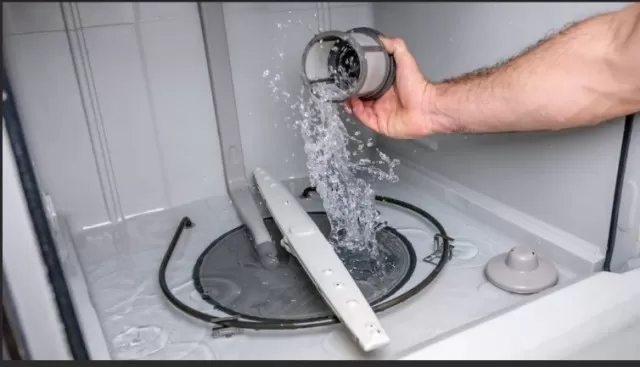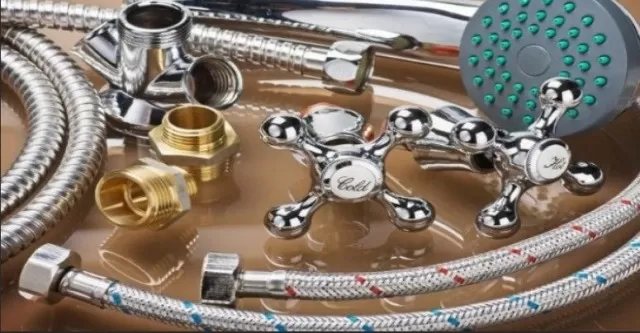Dishwasher Troubleshooting: No Water Supply. When your dishwasher doesn’t receive water during a cycle, it severely hampers its ability to clean your dishes effectively. There could be multiple reasons for this water shortage in your dishwasher.
It’s crucial to identify the underlying causes to address the issue properly. Neglected water supply valves, clogged water inlet filters, malfunctioning float switches, or faulty water inlet valves are some potential culprits. Checking these components and ensuring they are functioning correctly can help resolve the problem and restore proper water flow to your dishwasher.
Troubleshooting: Dishwasher Not Getting Water – Possible Cause: Defective Water Inlet Valve

One of the most common reasons why a dishwasher fails to receive water is a defective water inlet valve.
This valve plays a crucial role in filling the dishwasher with the appropriate amount of hot water, and its operation is controlled by a timer or electronic control. If the water inlet valve fails to open, it prevents water from entering the dishwasher.
Typically located behind the bottom access panel at the front of the dishwasher, the valve is connected to the water line via a hose, with another hose leading to the dishwasher tub. To inspect the water inlet valve, it is essential to unplug the dishwasher and disconnect the water supply beforehand.
Troubleshooting: Dishwasher Not Getting Water – Possible Cause: Malfunctioning Float Switch
One of the most common reasons why a dishwasher fails to receive water is a defective water inlet valve.
This valve plays a crucial role in filling the dishwasher with the appropriate amount of hot water, and its operation is controlled by a timer or electronic control. If the water inlet valve fails to open, it prevents water from entering the dishwasher. Typically located behind the bottom access panel at the front of the dishwasher, the valve is connected to the water line via a hose, with another hose leading to the dishwasher tub. To inspect the water inlet valve, it is essential to unplug the dishwasher and disconnect the water supply beforehand.
Troubleshooting: Dishwasher Not Getting Water – Possible Cause: Broken Door Switch
.

One possible reason for the dishwasher not receiving water could be a malfunctioning float switch.
During a wash cycle, as water fills up the dishwasher, a small plastic piece floats upward. Beneath this float, located at the bottom of the dishwasher tub, is the float switch responsible for signaling the water inlet.
If the float switch lacks connectivity or is broken, it may fail to trigger the opening of the water inlet valve, resulting in no water entering the dishwasher. To check the float switch, homeowners should unplug the dishwasher and ensure that the float arm mechanically activates the float switch when the float reaches the height of the top of the Water Heater.
Additionally, it’s important to verify that the wires connected to the float switch are securely attached and not loose.
Troubleshooting: Dishwasher Not Getting Water – Possible Cause: Broken Drain Solenoid
Bleach is widely known for its powerful disinfectant properties, making it highly effective at killing germs.
However, it’s important to note that bleach may not necessarily serve as an all-purpose cleaner. To effectively remove dirt, mildew, and residue from a surface, it’s necessary to perform thorough scrubbing and rinsing before applying bleach.
Additionally, it’s essential to exercise caution when using bleach on certain surfaces like granite or marble, as it can be too harsh and potentially cause damage.
While bleach excels at disinfecting, it may not provide the desired cleaning results when used alone. It’s advisable to use appropriate cleaning methods to lift dirt and grime before resorting to bleach as a disinfectant. This approach ensures that surfaces are thoroughly cleaned before the disinfection process, resulting in a more comprehensive and hygienic cleaning routine.
Remember, while bleach is a valuable tool for disinfection, it’s important to recognize its limitations as a general cleaner and take precautions to protect sensitive surfaces.
Troubleshooting: Dishwasher Not Getting Water – Possible Cause: Damaged Water Supply Line

A damaged water supply line could potentially be the reason why the dishwasher is not getting water.
Homeowners can perform a simple check to verify this possibility. They should examine the water supply and inspect the water inlet hose under the sink to ensure it is properly connected without any kinks.
To achieve the best cleaning results from your dishwasher, it is crucial to follow the manufacturer’s guidelines for loading the appliance. Crowding or overloading the dishwasher can hinder water circulation and impact the effectiveness of the cleaning process. By adopting proper loading techniques, you can optimize the cleaning performance and ensure spotless dishes. Here’s what you need to know:
- Follow Manufacturer’s Guidelines: Each dishwasher model may have specific loading instructions provided by the manufacturer. Refer to the user manual or guidelines to understand the recommended loading techniques for your dishwasher.
- Avoid Overcrowding: Resist the temptation to overcrowd the dishwasher. Leave sufficient space between dishes, utensils, and glassware to allow water to reach all surfaces effectively. Overloading can obstruct the spray arm’s rotation and prevent adequate water flow, resulting in poorly cleaned items.
- Maintain a Balanced Load: Distribute the dishes evenly throughout the dishwasher, paying attention to the weight and size of items. Place larger and more durable items, such as pots and pans, on the lower rack, while delicate glassware and smaller items should go on the upper rack. This balance helps ensure proper water circulation and cleaning performance.
- Provide Ample Space: Allow for ample space between dishes, particularly between plates and bowls, to allow water and detergent to reach every nook and cranny. Avoid nesting or stacking items too closely together, as this can create barriers that inhibit thorough cleaning.
- Pre-rinse When Necessary: While modern dishwashers are designed to handle most food residues, heavily soiled dishes may require pre-rinsing. However, be mindful not to pre-rinse excessively, as it can waste water and interfere with the dishwasher’s sensors, affecting its cleaning cycles.
By adhering to these loading guidelines, you can ensure optimal cleaning performance from your dishwasher. By maintaining a balanced load, providing ample space, and following the manufacturer’s recommendations, you’ll enjoy sparkling and spotless dishes with every wash.
*The information is for reference only.